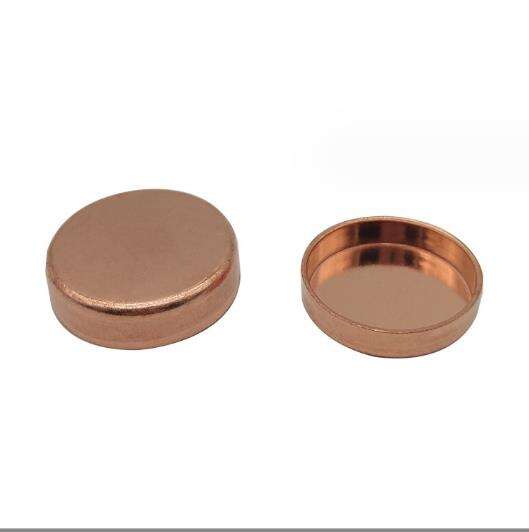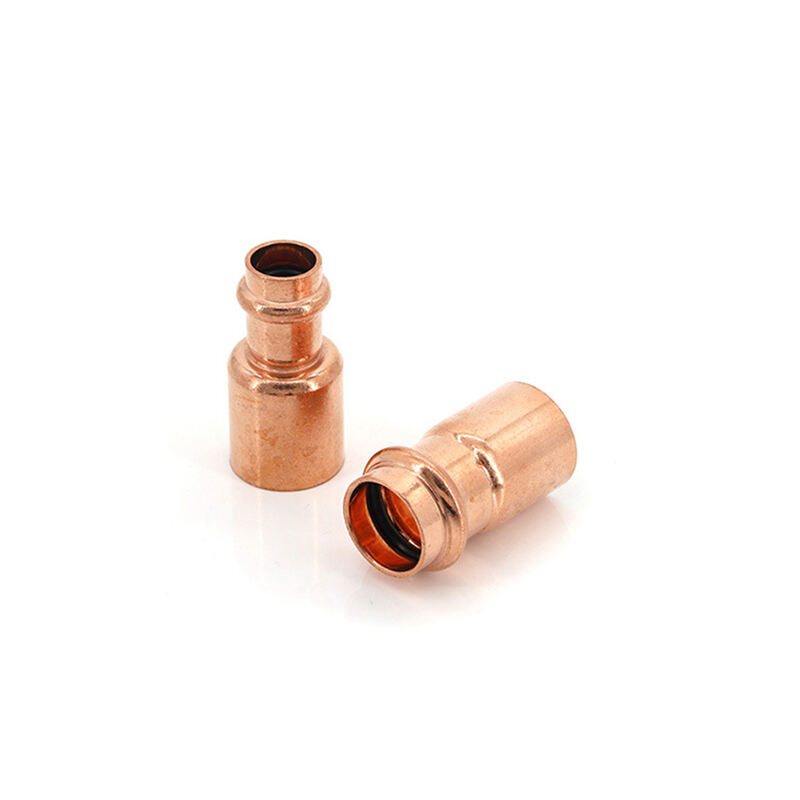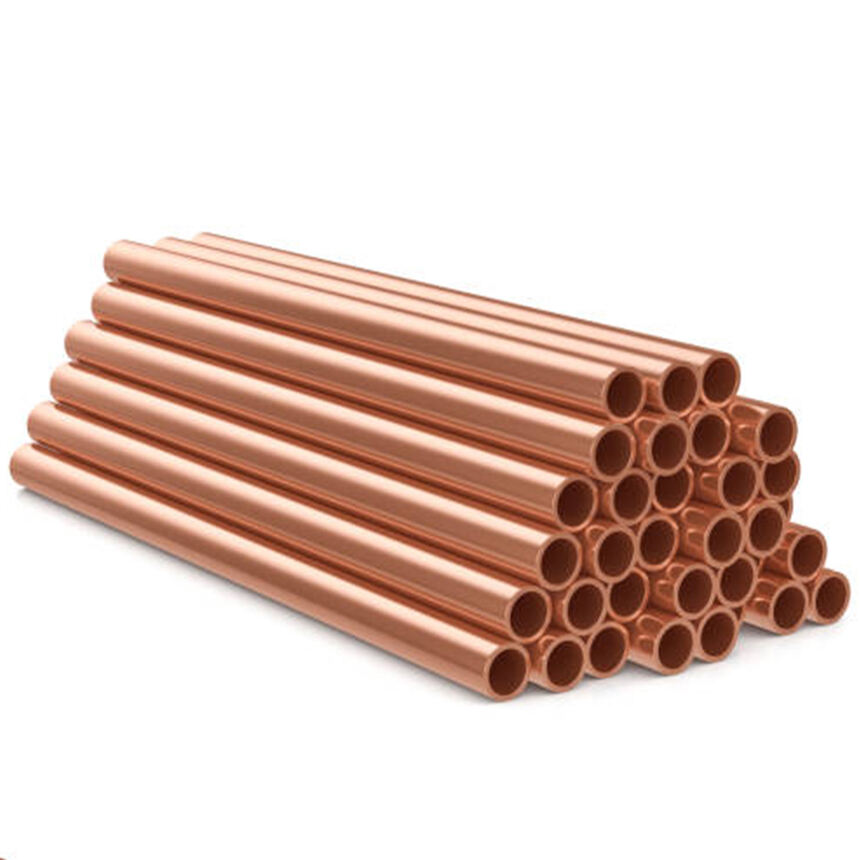Why Couplers Are Ideal for Copper Pipe Extensions
Benefits Over Soldered and Threaded Connections
Couplers provide significant advantages over both soldered and threaded connections, making them ideal for copper pipe extensions. They eliminate the need for complicated soldering techniques, which reduces both the installation time and the skill level required, thereby making the process more accessible to people with varied expertise. Unlike threaded connections, couplers offer a streamlined approach that avoids the issues associated with thread wear and potential leaks, ensuring a more durable and reliable joining solution. Additionally, the flexibility that couplers provide is invaluable, allowing for adjustments during installation, which is particularly advantageous in non-standard arrangements. Furthermore, unlike soldered joints, couplers can be disassembled easily, simplifying any future repairs or modifications. This flexibility and ease of use make them a superior choice.
Quick Coupling Advantages for Time-Sensitive Projects
Quick coupling systems offer numerous benefits that are especially beneficial for time-sensitive projects. These systems dramatically reduce installation time, making them ideal for urgent repairs or new developments where speed is crucial. They require minimal tools, which accelerates the process and minimizes project downtime, adding further efficiency. Many quick couplings can be fitted or removed without the need for special tools, enhancing the speed and ease of installation, which is critical in fast-paced environments. The operational flexibility of quick coupling systems is also notable, as they function effectively in constrained spaces and challenging access conditions, ensuring that installations can proceed without unnecessary delays even in tight spots. This capability makes quick couplers highly suitable for projects that demand swift execution.
Types of Copper Pipe Couplers for Secure Extensions
Compression Couplers for Rigid Pipe Types (K/L/M)
Compression couplers are essential components that offer a secure method for joining copper pipes. They work by tightening a ferrule onto the pipe, creating a strong seal that effectively resists leaks. Notably, these couplers are compatible with standard types of copper pipes, including K, L, and M, which makes them versatile for a wide array of applications. One significant advantage of compression couplers is the elimination of the need for soldering, which simplifies installations, making them accessible for both DIY enthusiasts and professional plumbers. However, to ensure long-term reliability, choosing the correct size of compression coupler is critical, as compatibility is key for optimal performance.
Push-Fit Connectors: SharkBite and Modern Alternatives
Push-fit connectors, such as the renowned SharkBite brand, represent a modern and efficient approach to pipe connections. These connectors allow for an intuitive installation process by simply pushing the pipe into the fitting, eliminating the need for additional tools. This straightforward method achieves an immediate watertight seal, making push-fit connectors ideal for emergency repairs and various pipe configurations. Their versatility extends to both insulated and non-insulated pipes, providing solutions for numerous applications. Additionally, these connectors can be easily removed, enabling system modifications without disrupting other connections, thus maintaining system integrity.
Specialized Fittings: Flare Tees and Conduit Applications
Flare tees are specialized fittings perfect for T-joint connections, offering a robust solution for extending and adapting pipe layouts. In conduit applications, utilizing these specialized fittings can significantly enhance both the security and airflow integrity of the installation. Constructed from durable materials, these fittings are designed to withstand common challenges such as corrosion and leaks. Understanding each fitting's unique purpose is crucial for selecting the right components, ensuring optimal performance and durability in various projects. Using specialized fittings effectively can lead to more secure and efficient installations, whether you're dealing with flare tees or other conduit-related needs.
Selecting the Best Coupler for Your Project
Matching Coupler Type to Pipe Wall Thickness
Ensuring compatibility between the coupler type and the pipe wall thickness is crucial for achieving optimal performance in plumbing projects. Different copper pipe types, such as K, L, and M, have unique wall thicknesses, which directly influence the appropriate choice of coupler. Thus, selecting the right coupler type not only prevents leaks but also complies with industry standards and guidelines, fostering a safe and efficient installation process. It is advisable to consult product data sheets, which can offer essential insights into the suitability and performance parameters of couplers and help in making informed decisions.
Pressure Ratings and Code Compliance Considerations
Understanding the pressure ratings of couplers is essential to avoid surpassing the operational limits, which may lead to system failures. In addition, knowledge of local and national building codes ensures installations are compliant with legal requirements. Couplers must meet or exceed specific pressure requirements tailored to the project and material used, reducing safety concerns. Consulting published guidelines from authorities such as the National Fire Protection Association can provide further assurance of adherence to trustworthy standards and practices.
Corrosion Resistance for Long-Term Durability
Selecting couplers made from corrosion-resistant materials considerably enhances their durability, especially in environments with alkaline or acidic characteristics. Regular inspection of system conditions can help prevent breakdowns and expensive repairs caused by corrosion over time. Employing corrosion protective coatings is another method to increase the longevity of copper connections, particularly in susceptible installations. The choice of materials and design should align with environmental factors and the expected lifespan of the project, ensuring enduring and effective performance.
Installation Best Practices for Copper Couplers
Step-by-Step Guide to Leak-Proof Connections
To ensure leak-proof connections when installing copper couplers, follow these steps carefully. First, prepare the pipes by cleaning the ends to remove any debris or residue, which can compromise the seal. Next, adhere to the manufacturer's instructions for tightening the couplers precisely, as this is imperative for a secure fit. After installation, it is critical to test the connections under pressure to identify any potential leaks. Conduct pressure tests accordingly and address any issues immediately. Additionally, regular inspection and maintenance of these connections can detect early signs of wear, preventing future leakage problems and maintaining system integrity.
When to Use Support Brackets with Extension Couplers
Support brackets play a crucial role in maintaining the stability of copper pipe systems, specifically when using extension couplers. They help distribute weight evenly and minimize stress, especially in long pipe runs or vertical setups. Identifying areas needing additional support can prevent undue strain on the connections. It's vital to install support brackets in accordance with building codes, enhancing the overall durability of the plumbing infrastructure. Regularly checking the condition of these brackets during maintenance schedules can avert sudden structural failures, ensuring the system operates smoothly over time.
Maintenance Tips for Coupled Joint Systems
Effective maintenance of coupled joint systems involves regular inspections for signs of wear, corrosion, or damage. Implementing a maintenance schedule helps in early detection and enhances the lifespan of these systems. Documenting all procedures aids in diagnosing issues and planning future repairs efficiently. Additionally, using proper cleaning methods and suitable materials mitigates wear and maintains coupling functionality. Educating users about correct handling and care techniques adds another layer of protection against unexpected damage, promoting longevity and efficient performance of the copper piping network.





